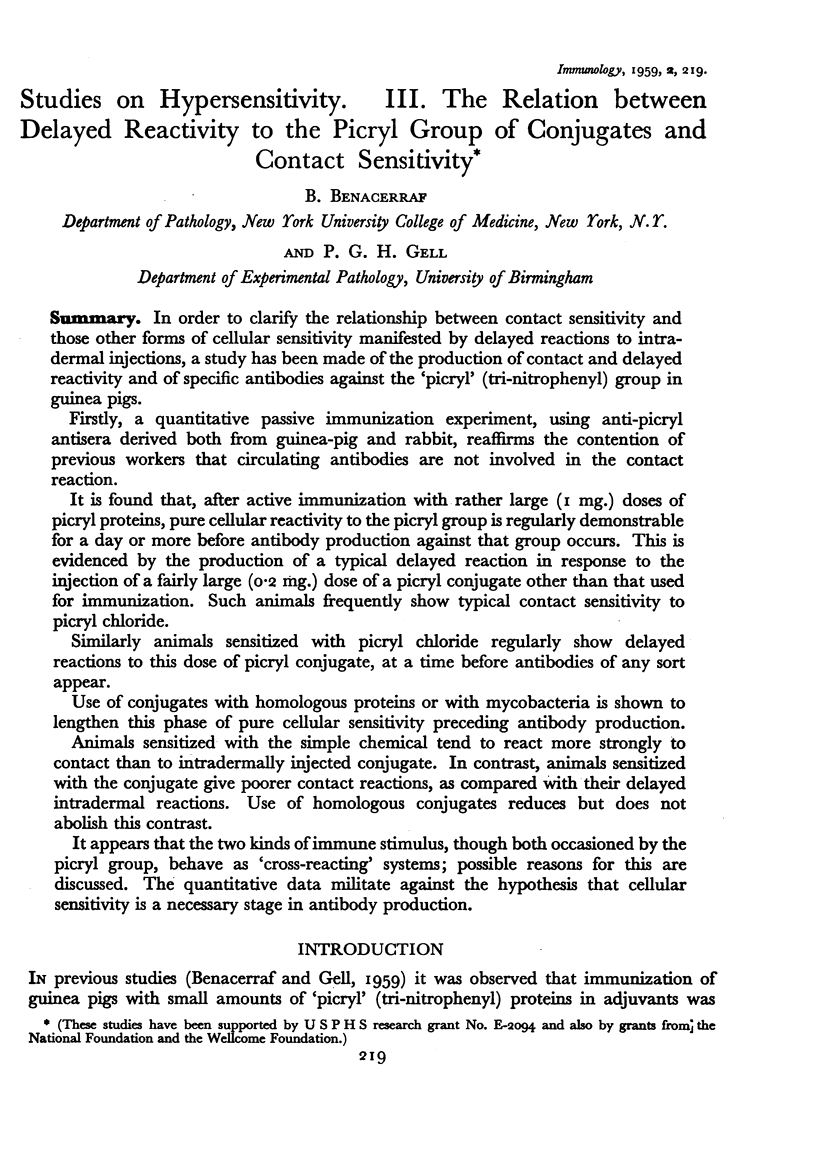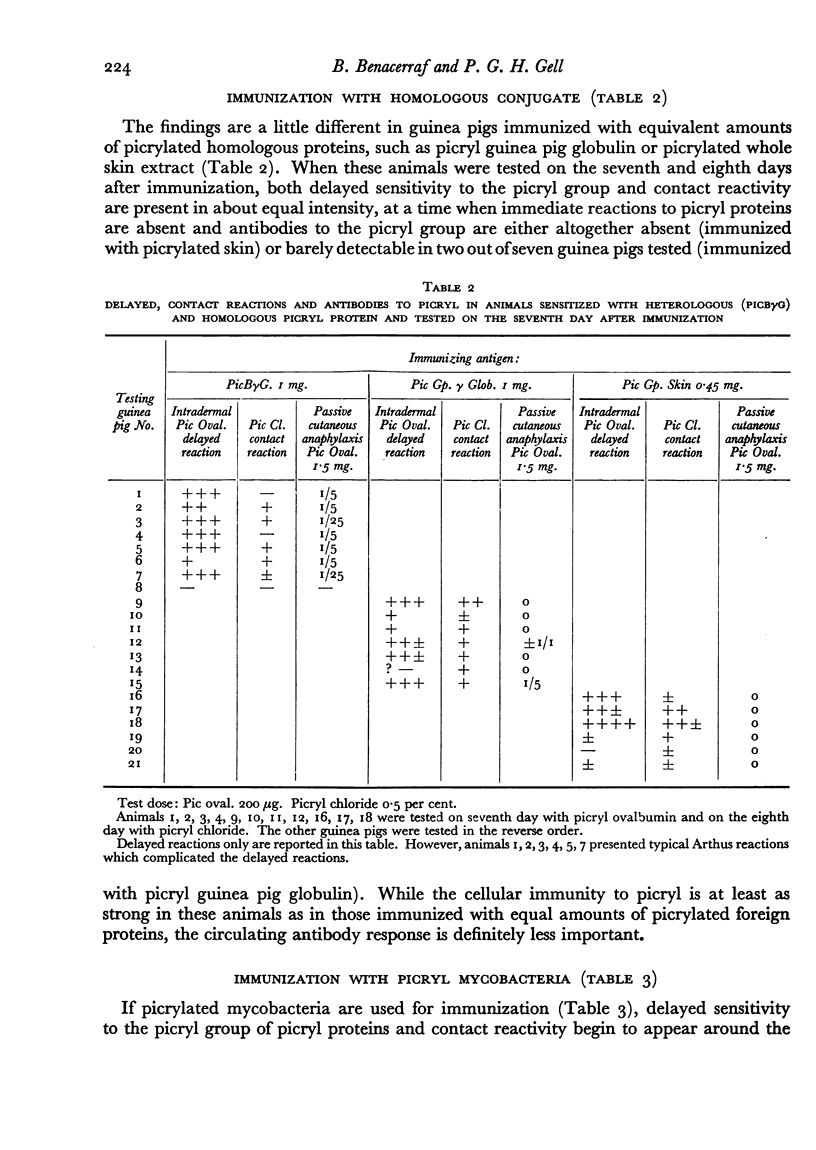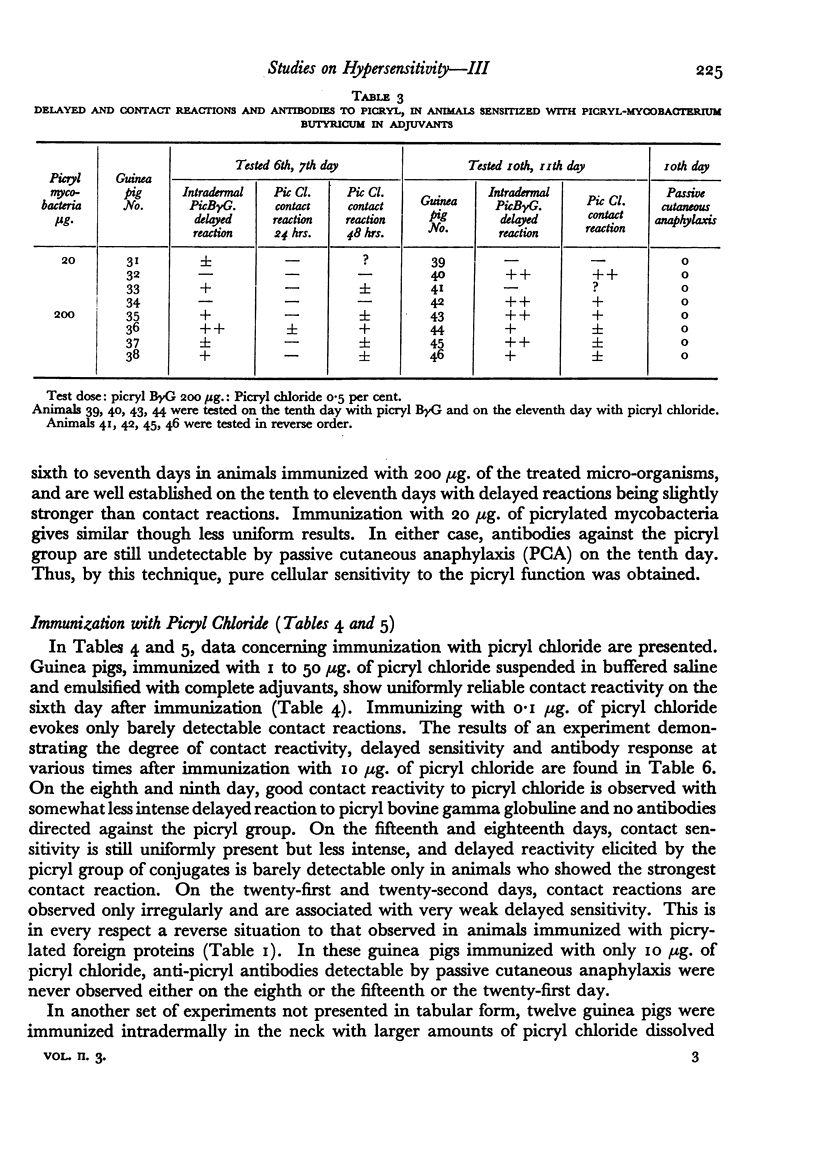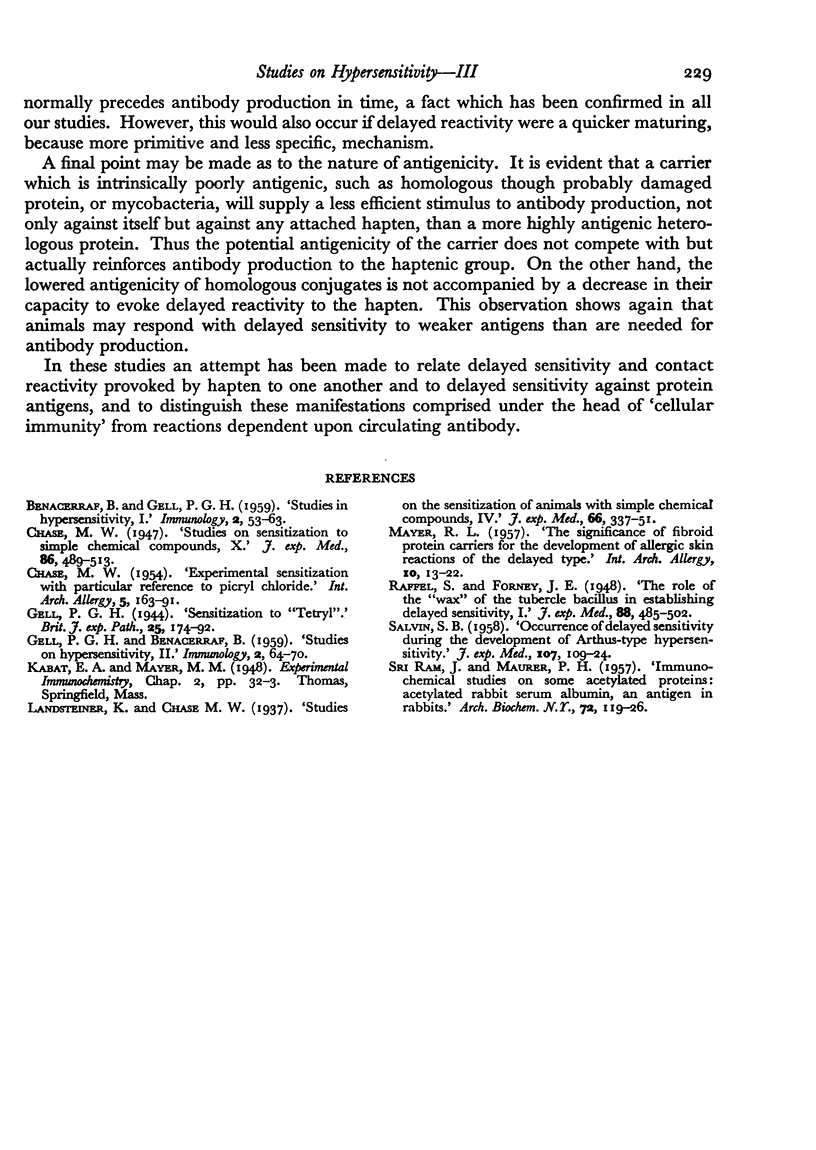Abstract
In order to clarify the relationship between contact sensitivity and those other forms of cellular sensitivity manifested by delayed reactions to intradermal injections, a study has been made of the production of contact and delayed reactivity and of specific antibodies against the `picryl' (tri-nitrophenyl) group in guinea pigs.
Firstly, a quantitative passive immunization experiment, using anti-picryl antisera derived both from guinea-pig and rabbit, reaffirms the contention of previous workers that circulating antibodies are not involved in the contact reaction.
It is found that, after active immunization with rather large (1 mg.) doses of picryl proteins, pure cellular reactivity to the picryl group is regularly demonstrable for a day or more before antibody production against that group occurs. This is evidenced by the production of a typical delayed reaction in response to the injection of a fairly large (0.2 mg.) dose of a picryl conjugate other than that used for immunization. Such animals frequently show typical contact sensitivity to picryl chloride.
Similarly animals sensitized with picryl chloride regularly show delayed reactions to this dose of picryl conjugate, at a time before antibodies of any sort appear.
Use of conjugates with homologous proteins or with mycobacteria is shown to lengthen this phase of pure cellular sensitivity preceding antibody production.
Animals sensitized with the simple chemical tend to react more strongly to contact than to intradermally injected conjugate. In contrast, animals sensitized with the conjugate give poorer contact reactions, as compared with their delayed intradermal reactions. Use of homologous conjugates reduces but does not abolish this contrast.
It appears that the two kinds of immune stimulus, though both occasioned by the picryl group, behave as `cross-reacting' systems; possible reasons for this are discussed. The quantitative data militate against the hypothesis that cellular sensitivity is a necessary stage in antibody production.
Full text
PDF










Selected References
These references are in PubMed. This may not be the complete list of references from this article.
- BENACERRAF B., GELL P. G. Studies on hypersensitivity. I. Delayed and Arthustype skin reactivity to protein conjugates in guinea pigs. Immunology. 1959 Jan;2(1):53–63. [PMC free article] [PubMed] [Google Scholar]
- GELL P. G., BENACERRAF B. Studies on hypersensitivity. II. Delayed hypersensitivity to denatured proteins in guinea pigs. Immunology. 1959 Jan;2(1):64–70. [PMC free article] [PubMed] [Google Scholar]
- MAYER R. L. The significance of fibroid protein carriers for the development of allergic skin reactions of the delayed type. Int Arch Allergy Appl Immunol. 1957;10(1):13–22. doi: 10.1159/000228361. [DOI] [PubMed] [Google Scholar]
- SALVIN S. B. Occurrence of delayed hypersensitivity during the development of Arthus type hypersensitivity. J Exp Med. 1958 Jan 1;107(1):109–124. doi: 10.1084/jem.107.1.109. [DOI] [PMC free article] [PubMed] [Google Scholar]


